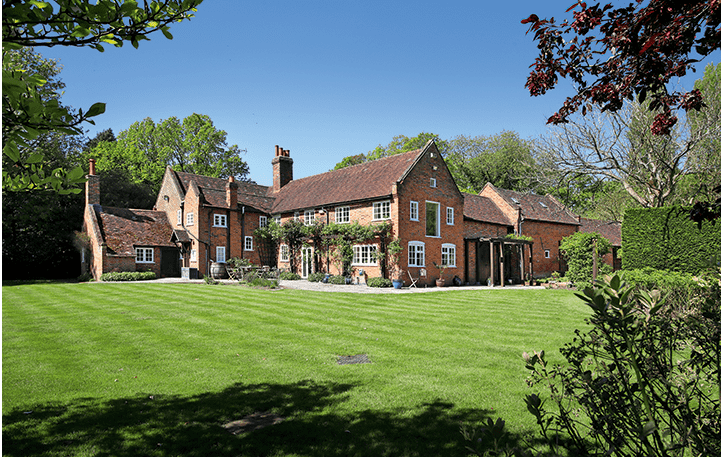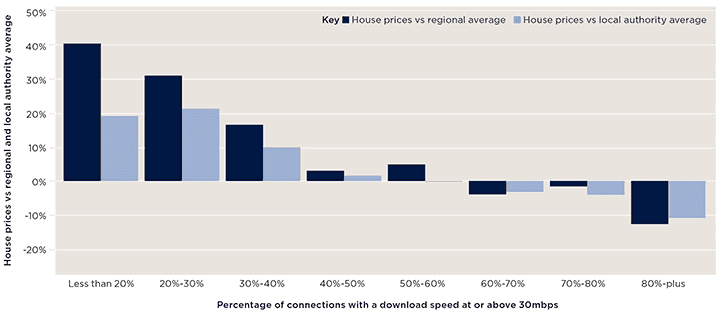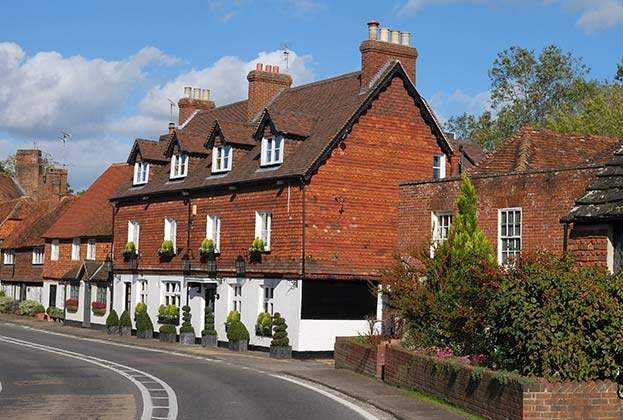Do areas with superfast broadband connectivity and high adoption command a premium when it comes to property values?
Whether logging on remotely for work or developing a deep and meaningful relationship with Alexa, the speed and availability of broadband is an increasing concern for most households. But how does it compare with the effect of good schools and a convenient commute in terms of influencing where we live and, in turn, the price of prime property?

Seer Green, Chiltern Hills, Buckinghamshire
Given the internet’s pivotal role in our day-to-day activities, the results of our latest research are somewhat counter-intuitive. Our analysis of connectivity speeds and house prices across the 8,651 electoral wards in Britain suggests that house prices are highest in areas where the proportion of superfast-broadband subscribers is lower. In electoral wards where fewer than 20% of homes have download speeds of 30mbps or more, the average house price is 41% more than the regional average (see chart below).
So, although households may be increasingly aware of their digital needs, it doesn’t necessarily follow that there will be high levels of broadband availability or adoption in the most valuable areas.

Property price and connectivity In general, house prices are higher in areas where the proportion of superfast-broadband connections is lower
Source: Savills Research, Ofcom, Land Registry, Registers of Scotland
Counter-intuitively, house prices are highest in areas where the proportion of superfast-broadband subscribers is lower
Savills Research
.png)
Some of this will be down to the demographic profile of households in the most expensive parts of the country. Wealthy, older households may be increasingly tech savvy, but they are typically less demanding of broadband than younger households on the lower rungs of the housing ladder. Equally, they will be more willing (or, in some cases, more keen) to spend their time off-grid in locations such as the South Downs and the Lake District. A case in point is the Brendon Hills in Somerset. It’s one of just seven wards in the country that has no superfast connectivity, yet the average property value is £661,000.
That said, there are a number of areas, such as Cambridge, Guildford and Brighton, that buck this trend. In each, the tech sector has played an important role in the local economy and has been a driver of wealth generation. This has resulted in affluent hotspots of digital connectivity.
In Cambridge, 72% of residents have superfast broadband and the average house price is £530,815. This is 60% above the regional average. For Guildford, with 69% adoption of superfast connectivity, average prices are £556,198 – 46% above the regional average.
So, what of the future? As more wealth is generated from the tech sector, so demand for prime property will rise among buyers who are both acutely aware of download speeds available and more demanding of what is on offer. For the moment, such buyers are fairly tightly clustered around certain locations, most notably around the superfast performers in the table below. But we would expect digital connectivity to become an increasingly important factor for home buyers.
.png)
Superfast superstars Wards with the highest value relative to its region and at least 75% superfast connections
Source: Savills Research, Ofcom, Land Registry, Registers of Scotland
Read the other articles within this publication below
.jpg)


.jpg)
.jpg)
.jpg)
.jpg)
.jpg)